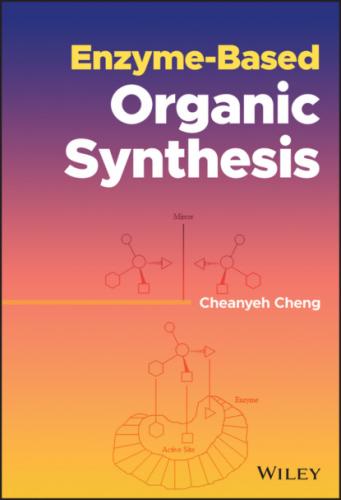Scheme 3.11 The transfer of γ‐phosphoryl group from ATP to hydroxyl group containing substrates by kinases.
Source: Chapman and Wong [41].
Protein crystallography in the solid state and 19F NMR in solution have elucidated the formation of a trigonal bipyramidal transition state with phosphorus fully bonded to three equatorial oxygens and partially bonded to axial donor’s oxygen and acceptor’s oxygen [43]. The hydrolysis of ATP to form ADP and Pi is highly exergonic that is used to drive the synthesis of information‐rich macromolecules, the transport of solute across membranes, and motion produced by muscle contraction.
Although most of the studies concerning about the phosphoryl group transfer using kinases are in vivo processes, there still some in vitro applications in organic synthesis. For instance, pyridoxal‐5′‐phosphate (PLP), a cofactor for enzymes catalyzing transaminations, decarboxylations, racemizations, and β‐ and γ‐carbon elimination/replacements, and are mostly associated with amino acid metabolism, can be synthesized in vitro through the phosphorylation of toxic antimetabolite l‐4‐hydroxythreonine (4HT) into 4‐phosphohydroxy‐l‐threonine (4PHT) by members of a novel kinase family DUF1537 (Scheme 3.12) [44].
Another example of the application of phosphorylation is about the bioinspired peptides containing 3 ser‐ser‐asp repeat motif (R‐SSD3) that was designed by mimicking the highly phosphorylated protein, dentin phosphophoryn (DPP), found in dentin and alveolar bone. Then, the R‐SSD3 peptides are sequentially phosphorylated at multiple serine sites in (DSS) n sequence by casein kinases (CK1 and CK2) as shown in Scheme 3.13. These phosphorylated peptides were further used to induce biomimetic calcium phosphate mineralization of collagen fibrils that successfully produce biomimetic composite nanofibrils with integrated organic and inorganic phases [45].
Scheme 3.12 Phosphorylation of 4HT to 4PHT by kinase DUF1537 for enzyme cofactor PLP biosynthesis.
Source: Modified from Thiaville et al. [44].
Scheme 3.13 Sequential phosphorylation of peptide R‐SSD3 with casein kinases.
3.4 Acetyl Group Transfer with Acetyltransferase
Acetyltransferases (ATs) catalyze the transfer of an acetyl group from acetyl coenzyme A (Acetyl‐CoA) to a variety of small molecules including lipids, amino acids, drugs, and sugars as well as large molecules such as proteins. The acetyl group donor (acetyl‐CoA) is generated in mitochondria from carbohydrate or amino acid catabolism by acetyl‐CoA synthetase utilizing acetate, CoA, and ATP [46, 47]. The small molecule melatonin synthesis using AT was a typical example of application in organic synthesis concerning the acetyl group transfer. Melatonin has been found in almost all organisms from photosynthetic bacteria to human beings. Melatonin is a potent direct free radical scavenger and antioxidant that strongly protects unicellular organisms, plants, and animals from oxidative insults. Thus, it is important to human health, agriculture applications, and in food and beverage industries [48]. Based on the classic melatonin synthetic pathway in animals, serotonin is first acetylated to form N‐acetylserotonin by arylalkylamine N‐acetyltransferase (AANAT) or arylamine N‐acetyltransferase (SNAT) and N‐acetylserotonin is, subsequently, methylated to form melatonin by N‐acetylserotonin O‐methyltransferase (ASMT) (Scheme 3.14) [48–50]. However, evidences strongly support that the two steps illustrated by Scheme 3.14 could be reversed and may be more important in certain organisms and under certain conditions [48].
Physostigmine is a pyrroloindole alkaloid and is a parasympathomimetic drug that reversibly inhibits acetylcholinesterase. Physostigmine has been used clinically to treat a wide variety of disorders including Alzheimer’s disease, glaucoma, delayed gastric emptying, and orthostatic hypertension. In addition, physostigmine can cross the blood–brain barrier, and this is used to counteract the effects on the central nervous system of overdoses of atropine, scopolamine, and other anticholinergic drugs [51–53]. Just like melatonin, physostigmine is derived from tryptophan; however, the biosynthetic pathway for physostigmine involves more steps that are characterized by unusual reaction cascade consisting of highly coordinated methylation and acetylation/deacetylation reactions [51]. The N‐acetylation of serotonin to produce N‐acetyl‐5‐hydroxytryptamine catalyzed by N‐acetyltransferase is the third reaction step of the reaction cascade that is the same step as the first step in Scheme 3.14 for melatonin synthesis.
Scheme 3.14 Synthetic pathway of melatonin from serotonin by two kinds of acetyltransferases.
Source: Based on Tan et al. [48]; Weissbach and Redfield [49]; Axelrod and Weissbach [50].
The GCN5‐related N‐acetyltransferase (GNAT) superfamily encompasses more than 10 000 related enzymes in all kingdoms of life and human acetyl‐CoA: glucosamine‐6‐phosphate N‐acetyltransferase 1 (GNA1) belongs to a member of it [54, 55]. In the cytosol, GNA1 catalyzes the transfer of an acetyl group from the acetyl coenzyme A donor substrate to the acceptor substrate glucosamine‐6‐phosphate (GlcN6P) to form N‐acetyl‐glucosamine‐6‐phosphate (GlcNAc6P) that is used as an intermediate in the biosynthesis of UDP‐GlcNAc. Since N‐butyryl glucosamine (GlcNBu), an analog of GlcNAc, has been shown the healing properties of bone and articular cartilage in animal’s arthritis, enzymatic synthesis of GlcNBu is important for biomedical applications [56–58]. Research results have shown that both acetyl and n‐butyl groups were transferred to GlcN6P by GNA1 to form corresponding GlcNAc6P and GlcNBu6P, respectively [54]. Therefore, GlcNBu6P can be easily and subsequently converted to GlcNBu by alkaline phosphatase.
Instead of small molecules acetylation, reversible protein acetylation by corresponding acetyltransferase is a ubiquitous means for the rapid control of diverse cellular processes [59, 60]. The acetyl group on acetyl‐CoA is transferred to the ε‐amino group of lysine residues of the acceptor protein by acetyltransferase. This is just the case for the acetylation of histones by histone acetyltransferases (HATs) that has an important role in transcriptional regulation by remodeling chromatin structure. The acetylation of histones may result in altering interactions between protein–protein and protein–DNA complexes due to the neutralization of positive charged lysine in the amino termini of histone proteins [61, 62]. In higher organisms, aberrant acetylation of lysine residues in histone tails correlates with diseases such as cancers and developmental disorders and may contribute to modulation of cell life span [63, 64]. In mammalian mitochondrial matrix, endoplasmic reticulum lumen, and peroxisomes, carnitine
